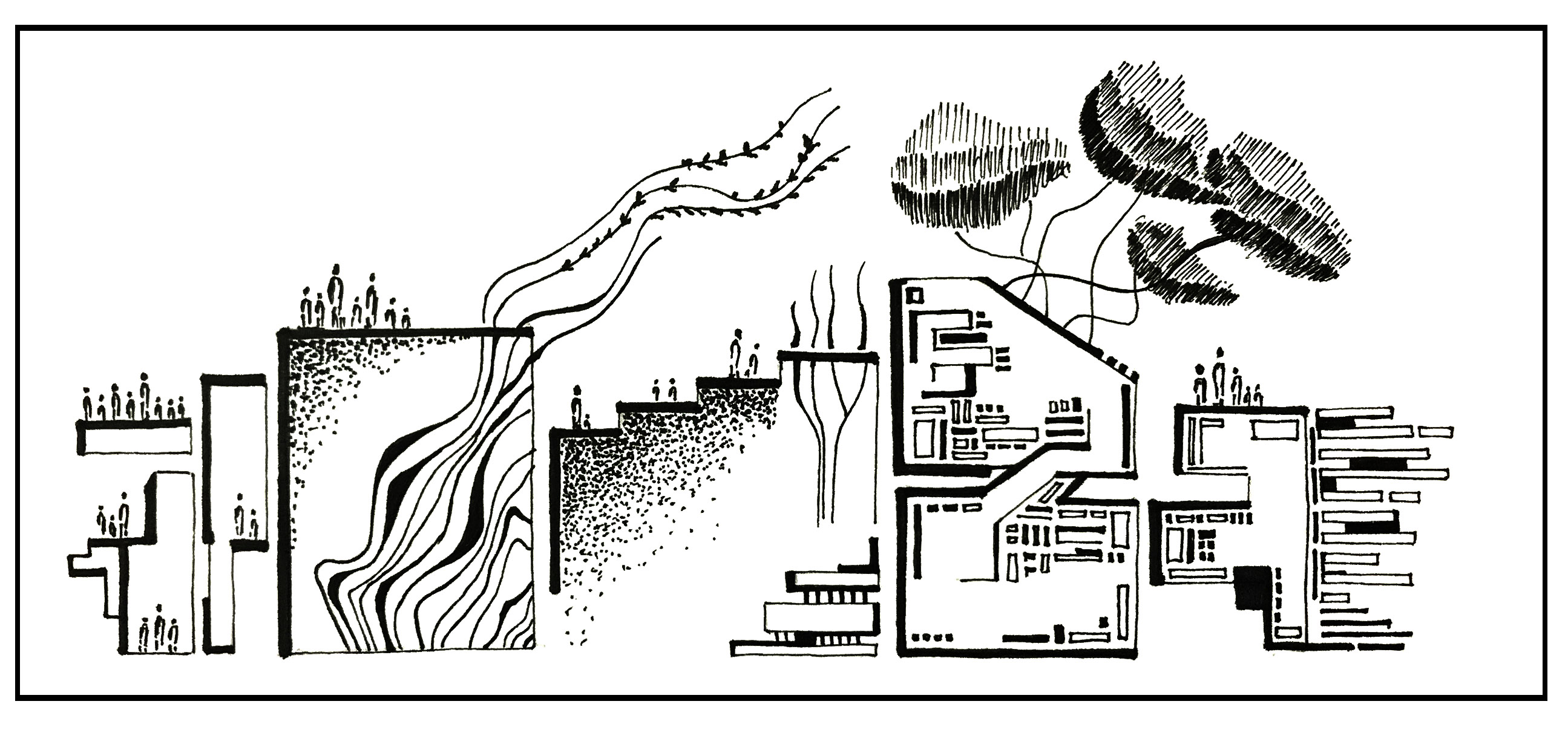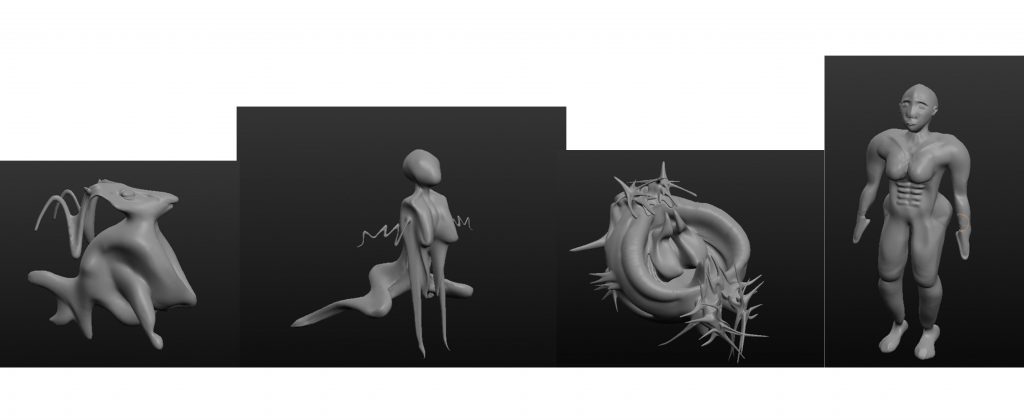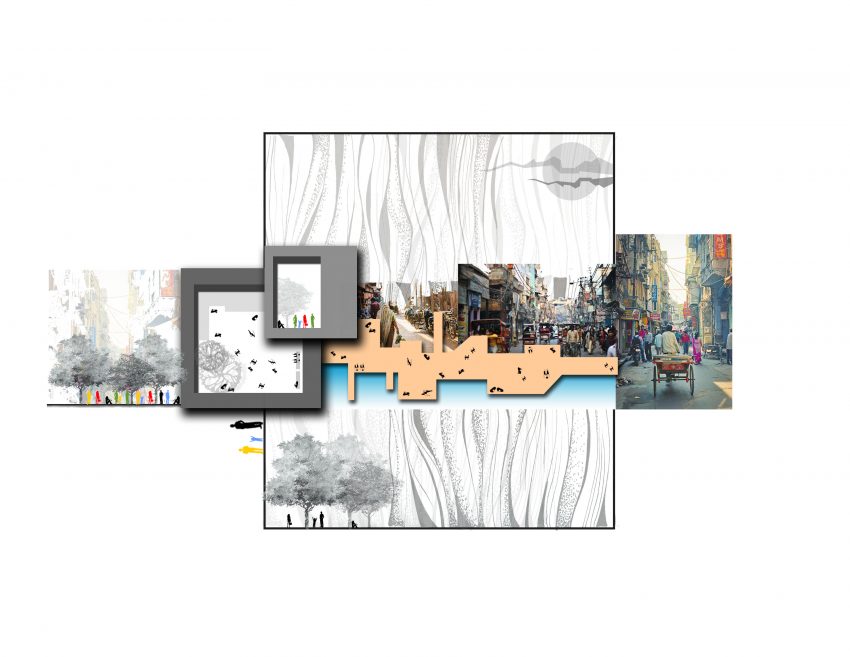By Homa Parmar
Introduction
I am an Architecture major studying Urban design and Ecologies. As a graduate student at the Loretta. C. Duckworth Scholars Studio for the academic year, 2019-2020, I will be exploring different ways in which social inclusivity can be incorporated into architectural design. By using digital methods for modeling and representing space, I will be exploring the correlation between people and architecture by defining spaces in the urban city fabric through means of water.
Cities with open urban squares are my friend. Open public spaces with streets bustling with people is what my interest feeds on.
Only when you design for people, will you get people!
The City is a place for public art and architecture, an expression for, and to be appreciated by, its people. As a designer, it becomes a responsibility to provide means and ways to enhance social inclusivity. Architecture is dynamic, flexible and adaptive, and the design should be in a position to establish dialogue with its people. The urban fabric needs to be a miniature block amalgamations epitomizing life and the potential of buildings with green spaces acting as the breathing pockets for the city.

^ An abstract I drew demonstrating the design modulation and need for open place-making
My time at the Scholars Studio will be dedicated to exploring how cities of the future can be shaped in a way to cater to global urban crisis that the entire world is facing today, especially water crises. I am interested in knowing the relation a space has with its people through means of water.
As a part of my research thesis, I will be answering questions like, where, why and how do people gather on the street? Can the water crisis be addressed through spatial design and how? How does the presence of water in a public setting impacts the nature of the space? What happens to the edge when two ecotones – water and land – meet? How do we get water for public use in tough times of crisis?
The essence of my thesis will be to explore spaces that help encourage public conversation and mass interaction that ultimately incorporates a sense of belonging among the community and enhances the co-existence of the urban space with its ecology and varied user groups.
3D Modeling and Architecture
My work throughout the year will revolve around understanding the interrelation between water, people and architecture exploring urban spaces to fight the water crisis through design.
Taking advantage of 3D printing, laser cutting and digitally-trained minds at the Scholar’s Studio, I will be exploring the behavior of water by studying the topography of a place through 3D printing the terrain and digitally documenting the impact of water on spaces. This will help in studying the water-flow on the site and learn how to direct the natural slopes in my site and incorporate any lessons into my design.
I hope to explore how to respond to the water crisis through architecture by experimenting with 3D modeling the urban fabric whilst respecting the people and their reactions. So far, I have been experimenting with 3D modeling software like Sculptris, Tinkercad and Meshmixer to get familiar with their functioning. Simultaneously, I have been researching, gathering knowledge, and decoding answers to the questions that support my thesis. I aim to produce fluid narratives for urban spaces and built form by making use of interactive models in 3D modeling software. This will help me visualize the spaces in depth and design for the needs of the people in times of crisis.
With the thought of dry urban landscapes in mind, I will aim at designing tools that have an impact on curbing the water crisis. Inspired by design interventions like Drinkable book, an education and filtration tool by researchers at Carnegie Mellon University, made of “scientific coffee filter” paper that can be used to purify drinking water and reduces 99.9% of bacteria. I am also inspired by El Helou’s project of creating porous concrete tiles that can capture condensation from fog and funnel it into storage tanks for use in bathrooms and gardens. The WaterSeer is a structure that uses the surrounding environment to extract water from the atmosphere.
Further in the process, the idea is to 3D print and model tools for optimizing fog collection and water harvesting tools to provide for lack of water in regions of need. Architects of the Future must think about function as much as they do about form. Architecture is now more about designing something for people that can help them in the long run. I look forward to the coming year as my ideas about digital representation and inclusive architecture become a reality.
